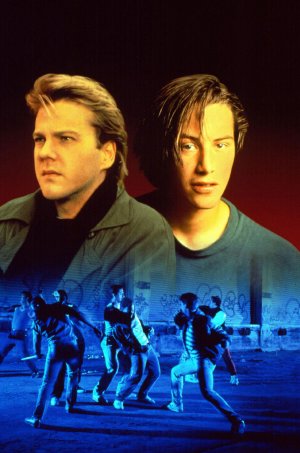
The Graboids are back!
For those who aren’t familiar with the term, the Graboids are the giant, ravenous sandworms that were first introduced in the 1990 film, Tremors. Graboids are always on the hunt for food and, over the course of the original film, four sequels, and one prequel, they’ve attacked and devoured a countless number of communities, all while helping to spread all sorts of comedic mayhem. For whatever reason, the mere presence of a Grabboid tends to lead to human beings getting very quippy.
This year, the Graboids return for a sixth time with Tremors: A Cold Day In Hell. This time, the Graboids are up in Canada and they’re eating a bunch of scientists. Normally, Canada would be too cold for a Graboid infestation but apparently, climate change has altered the rules of the game. That’s one good thing about climate change. It can be used to explain away just about anything. Why does Northern Canada look so sunny and warm? Climate change! Why are the Graboids no longer limited to the desert? Climate Change!
Anyway, this is pretty much a typical Tremors sequel. A bunch of people end up getting trapped in one location and are then picked off by the Graboids. There’s some sinister scientists and bio-weapon subplot but those are mostly afterthoughts. The film promises Graboids and, eventually, it delivers them. Especially when compared to some of the other films in the franchise, A Cold Day In Hell is rather slowly paced and the CGI isn’t always as convincing as you might want it to be. On the one hand, the film delivers pretty much what you would expect it to deliver. On the other hand, it’s also rather bland.
Oh well. At least Burt Gummer is back!

As any fan of the franchise can tell you, the Graboids are pretty much secondary to the presence of Burt Gummer. Brilliantly played by Michael Gross, Burt is the only character to have appeared in not only every Tremors film but also the TV series as well. (Okay, technically, the fourth film featured Burt’s great-grandfather but Hiram Gummer might as well have been Burt Gummer.) Burt is a heavily armed doomsday prepper who lives out in the middle of the desert and who hates the government. Though the IRS may just view him as someone who refuses to pay his taxes, fans of the franchise know that Burt is the world’s greatest Graboid hunter.
What is Burt’s appeal? Well, some of it has to do with the fact that Burt is always honest and consistent. It’s been 28 years since Burt was first introduced and, in that time, he has always loved guns and hated the government. He doesn’t hold back on his views and he makes absolutely no apologies and that’s exactly the type of guy who you want by your side when you’re dealing with a bunch of killer sandworms.
In the end, though, Burt’s greatest appeal is that he’s a thowback. If Tremors had been produced in the 21st Century, there’s no way that a character like Burt would have survived the movie. His anti-government stance would have been viewed as being unpatriotic during the Bush and Obama years and his love of guns would have gotten the movie picketed by Shannon Watts and denounced on twitter by the writers at Slate and Vox. The AV Club would declare the character to be problematic and Michael Gross would have to go on Colbert and personally apologize to everyone who was hurt by his performance. But since the first Tremors was made way back in the 90s, Burt is allowed to thrive in all of his anti-PC glory. At a time in which monster movies are dominated by grimly-written heroes and overly rational scientists, Burt is a reminder that films like this should, at the very least, attempt to be fun.
As for Tremors: A Cold Day In Hell, it was released on Netflix earlier this year and it premiered on SyFy last night. It’s forgettable but at least Burt’s back.
 Vista Verde, an exclusive suburban high school in California, has a problem. Some of the students have a bad attitude. Some of them are experimenting with drugs. Graffiti is showing up all over the school. What better way to return peace to Vista Verde than for a bunch of WASPy rich kids and other jocks to organize into a secret vigilante force? The headmaster thinks that it’s a great idea and soon “The Sentinels” are holding mock trials and shooting the other students with paintball guns. One bad kid even turns up dead. Graffiti is no joke.
Vista Verde, an exclusive suburban high school in California, has a problem. Some of the students have a bad attitude. Some of them are experimenting with drugs. Graffiti is showing up all over the school. What better way to return peace to Vista Verde than for a bunch of WASPy rich kids and other jocks to organize into a secret vigilante force? The headmaster thinks that it’s a great idea and soon “The Sentinels” are holding mock trials and shooting the other students with paintball guns. One bad kid even turns up dead. Graffiti is no joke.


